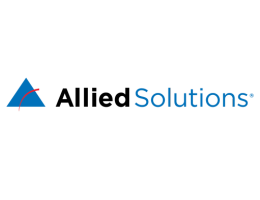During the pandemic, delinquencies were low due to mandated deferrals and accommodation programs. These programs paused debt recovery efforts, but as forbearance and forgiveness expire, credit unions are seeking to mitigate portfolio risk with optimized collection efforts. Now, the CFPB’s Spring 2022 Supervisory Highlight is top of mind as lenders navigate resuming collection efforts while adjusting to new regulatory guidance and seeking to avoid violations of the FDCPA (Fair Debt Collection Practices Act).
Delinquencies are low, but not nonexistent.
The current average amount of credit card debt per borrower is $5,127 , which is below the pre-pandemic average of $5,818. The CFPB reports that while mortgage delinquencies are low, 0.5% of mortgages are in late stage (more than 90-day) delinquency. Borrowers relied on credit for financial stability less during the pandemic, and as consumer sentiment steadies, credit is rebounding. The industry didn’t see the dramatic uptick in delinquencies as expected in 2021, but while delinquencies are low, they still need to be addressed. Existing consumer debt and the rising costs of food and fuel, plus portfolio concerns and CFPB guidance, are contributing to increased attention placed on collection efforts.
3 strategies to optimize your collections program
It is no surprise that technology has become a non-negotiable aspect of business, and this also includes delinquency management. As credit unions continue to make digital shifts in business, technology solutions built specifically for collections should also be considered to optimize debt recovery efforts. Here are 3 ways to optimize your collections program:
- Leverage
Gathering, sorting, and analyzing the correct borrower data is a crucial step in the recovery process. Basic data is used to contact borrowers (including cosigners). Advanced data, such as a borrower’s financial habits, can be used to forecast the level of risk. While data cannot dictate which borrowers will correct a delinquent account(s), it can be used to predict borrower activity, track financial behavior, and provide risk scoring to forecast high and low risk borrowers. For a comprehensive portfolio management strategy, a robust platform is also needed to leverage data in the best way possible.
- Invest in a robust, cloud-based platform
A collections technology SaaS integrates and automates borrower data to create more efficiencies in the recovery process.
A robust platform should include these features:
-
- Cloud-based
- Customized reports and queues
- Payment integrations and tracking
- Core system integration
This type of platform keeps collection efforts in-house while empowering back-office staff to handle the collections process confidently and compliantly.
- Engage and educate employees
As more traditional collection agencies close their doors, credit unions will either need to aggregate their buying power together to ensure that their portfolios get worked or empower in-house staff to efficiently work collections. With an already built platform, collections can be streamlined and can empower back-office staff with seamless automation and practical analytics.
If your credit union manages collection efforts in-house it is best practice to frequently review member communications and complaints. Review your collection scripts, policies, and procedures with your legal and compliance counsel so that they are consistent with applicable consumer laws and to mitigate compliance issues such as UDAAP.
Addressing delinquencies and recoveries beyond the pandemic continues to be a concern but also a necessary business practice for credit unions. With integrated, collections-focused technology and consistent, strategic best practices, credit unions can optimize collection efforts.








